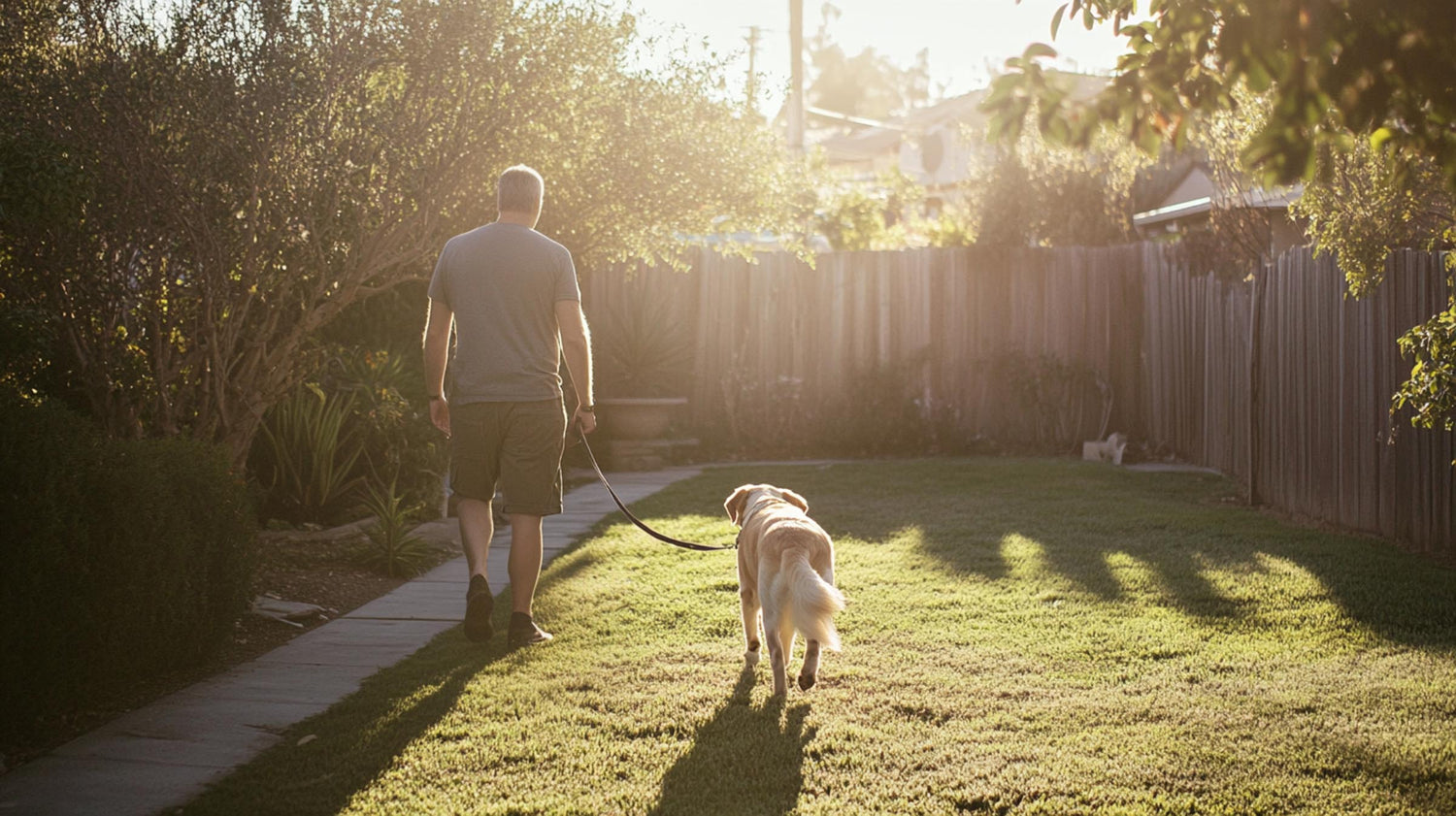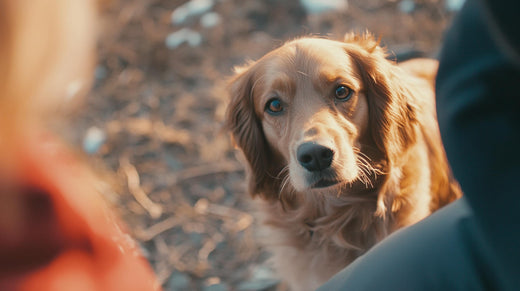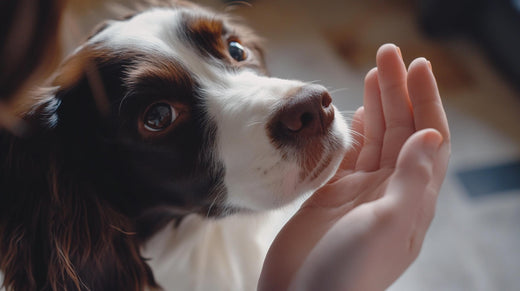Walking your dog should be a fun and enjoyable activity, but leash pulling can quickly turn it into a frustrating experience. Whether your dog is a curious puppy eager to explore or an older dog with too much energy, pulling on the leash is a common challenge for many pet owners. The good news? With the right techniques, tools, and consistency, you can teach your dog to walk calmly by your side, transforming your daily walks into a more pleasant experience for both of you.
In this guide, we’ll explore 26 expert tips to stop your dog from pulling on the leash, helping you regain control and enjoy stress-free walks.
Choosing the Right Gear

Using the right equipment can make all the difference in how easily you can control and train your dog on walks.
1. Use a Front Clip Harness
A front-clip harness is one of the most effective tools to stop leash pulling. Unlike traditional harnesses or collars, the front-clip design redirects your dog’s pulling to the side, making it harder for them to gain forward momentum. This gives you more control and helps prevent your dog from dragging you forward.
Why it works: By shifting the pressure to your dog's chest, front-clip harnesses reduce their ability to pull effectively, promoting better leash manners and more controlled walks.
2. Avoid Retractable Leashes
Retractable leashes allow dogs to wander and pull, which can reinforce pulling behaviour. Instead, use a standard 1.2-1.8 metre leash (4-6 foot), which gives you more control and teaches your dog that they can’t extend the leash by pulling.
Why it works: A standard leash prevents your dog from gaining more freedom through pulling, making it easier to enforce loose leash walking.
3. Use a Double-Clip Leash System
For extra control, use a double-clip leash that attaches to both a front-clip harness and the dog’s collar or back harness. This setup offers more guidance and helps distribute pressure across the body, making it harder for your dog to pull and easier for you to manage their movements.
Pro Tip: A double-clip system can help manage more reactive or strong dogs that require extra control during walks.
Pre-Walk Preparation

Before you even step outside, there are steps you can take to set the right tone for your walk.
4. Burn Off Excess Energy Before Walks
Some dogs pull simply because they have too much energy. Before leash training, play fetch or engage in another activity to tire your dog out a bit. A dog with less pent-up energy is more likely to focus and follow commands during the walk.
Pro Tip: Use playtime to let out extra energy, so walks become a calm training opportunity.
5. Teach Your Dog to Wait Calmly at the Door
Before even starting your walk, make sure your dog is calm when you put on their leash. Have them sit and wait patiently while you prepare, and only leave once they are calm. This teaches your dog that the walk won’t start until they’re in a relaxed state, setting the tone for better behaviour outside.
Why it works: Calmness at the door reduces excitement levels that can lead to pulling once outside.
Training Techniques

These are hands-on methods and strategies to directly teach your dog how to walk on a loose leash.
6. Keep the Leash Short, But Not Tight
Give your dog some slack on the leash, but not too much. A short leash with a few inches of slack helps prevent pulling by keeping your dog close and focused. However, avoid keeping the leash too tight, as this can lead to more tension and pulling.
Why it works: A short, relaxed leash reduces the temptation for your dog to bolt ahead.
7. Use the “Be a Tree” Technique
When your dog pulls on the leash, stand still like a tree and don’t move. Only start walking again when the leash becomes loose. If your dog pulls again, repeat this process. The idea is that moving forward is the reward for a loose leash, not pulling.
Why it works: The "be a tree" technique is an effective and simple way to show your dog that pulling won’t get them anywhere.
8. Teach the “Heel” Command
Use a verbal cue like “heel” to train your dog to walk close to your side. Each time your dog pulls, gently bring them back to your side and use the “heel” command, rewarding them when they stay there. This encourages them to walk in the proper position during the entire walk.
Why it works: A consistent verbal cue provides clarity and helps your dog learn exactly where they should walk.
9. Use Leash Pressure Games
Teach your dog to respond to leash tension by playing leash pressure games. Gently apply tension to the leash and reward your dog when they move toward you to release the pressure. This reinforces the idea that they should move closer to you when they feel tension on the leash.
Pro Tip: Start indoors in a distraction-free environment and move outdoors as your dog becomes more responsive.
10. Incorporate Hand Targeting
Hand targeting involves teaching your dog to touch your hand with their nose. This technique is useful for redirecting their attention when they pull or when distractions arise. By getting them to focus on targeting your hand, you can guide them back to your side.
Why it works: Hand targeting offers a physical and engaging way to redirect your dog’s focus and reinforce loose leash walking.
11. Turn in the Opposite Direction
If your dog pulls, try turning in the opposite direction and walking away. This teaches your dog that pulling won’t get them where they want to go. Keep changing directions each time they pull, until they learn to follow your lead.
Why it works: Your dog learns that pulling leads them away from what they want, reinforcing the importance of walking calmly by your side.
12. Teach the “Watch Me” Command
Use the “watch me” command to get your dog’s attention during walks, especially when distractions arise. This command encourages eye contact, reinforcing your role as the leader and redirecting their focus away from things that may cause them to pull.
Pro Tip: Practise the “watch me” command at home or in low-distraction environments first to ensure your dog responds consistently during walks.
14. Make Yourself More Interesting
Dogs are naturally curious and easily distracted by their surroundings. To keep your dog’s attention on you, make yourself more interesting during walks. Engage your dog with games, verbal cues, and short training sessions to keep them focused on you rather than external distractions.
Pro Tip: Be energetic and interactive, varying your pace and direction to keep your dog guessing.
15. Vary the Walking Speed
For dogs who have mastered basic leash manners, varying your walking pace can keep them engaged and focused. Walk slowly for a few steps, then speed up briefly before slowing down again. This unpredictability forces your dog to pay attention to your movements, rather than rushing ahead or pulling.
Pro Tip: Changing speed during walks keeps your dog mentally stimulated and prevents them from getting bored or distracted.
Rewards and Motivation

Focus on reinforcing good behaviour with rewards, praise, and natural motivators.
16. Reward Loose Leash Walking
Carry high-value treats and reward your dog whenever they walk by your side without pulling. Use these rewards frequently at the beginning to reinforce the desired behaviour, and gradually space them out as your dog improves.
Pro Tip: Reward with treats, praise, or a chance to sniff around as a way to let your dog know they’re doing the right thing.
17. Incorporate 'Life Rewards'
Along with treats, use “life rewards” during your walks. These rewards are things your dog enjoys, like getting to sniff a tree or greet another dog. Rewarding your dog with these natural experiences when they walk calmly reinforces that loose leash walking leads to more fun.
Why it works: Life rewards provide variety and enhance the walk’s enjoyment, making calm walking more appealing.
18. Use High-Value Treats
Some dogs may not respond to regular treats in highly stimulating environments. Use high-value treats like boiled chicken, cheese, or special dog treats that they only get during training. These more enticing rewards help capture their attention and reinforce good behaviour.
Pro Tip: Save the best treats for outdoor or high-distraction situations to keep your dog focused.
19. Play as a Reward
Incorporate play into your walks as a reward for good behaviour. When your dog walks calmly, stop for a quick game of tug or fetch. This keeps the walk fun and rewarding while reinforcing that polite walking leads to enjoyable activities.
Pro Tip: Bring a favourite toy along to use as a reward during walks, especially if your dog is more toy-driven than treat-driven.
Keys to Success

Leash training takes time, and being consistent in your approach is essential for success.
20. Be Consistent
Inconsistency in training sends mixed signals to your dog. If you occasionally let your dog pull on the leash because you’re in a hurry, it can undo all your progress. Be diligent in stopping every time your dog pulls, regardless of the situation.
Why it works: Consistency builds strong habits and reinforces your dog’s understanding of the rules.
21. Don’t Rush the Process
Teaching your dog to stop pulling on the leash won’t happen overnight, and rushing the process can lead to frustration. Focus on gradual improvements, even if it means only walking a few steps without pulling at first. Celebrate small wins to keep both you and your dog motivated.
Why it works: Patience ensures long-term success and prevents backsliding in training.
22. Stay Calm and Focused
Dogs can pick up on their owner’s emotions, and if you become frustrated or tense during leash training, your dog may react with more excitement or anxiety. Stay calm, and remember that leash training takes time. The calmer you are, the more likely your dog will mirror your behaviour.
Pro Tip: If you’re feeling frustrated, take a short break before continuing your walk to reset your energy.
23. Practice in Short Sessions
Leash training can be tiring for both you and your dog, especially if progress feels slow. Keep training sessions short—10 to 15 minutes at a time—to prevent burnout and keep the experience positive. End each session on a good note with a successful loose leash walk, even if it’s only for a few steps.
Why it works: Short, positive sessions maintain your dog’s interest and motivation, helping them stay engaged and preventing frustration.
Handling Special Situations

Some dogs pull because of specific issues like anxiety or distractions. These tips help you manage those situations.
24. Address Anxiety-Related Pulling
If your dog pulls because of anxiety, start by walking them in calm environments where they feel safe. Gradually expose them to more stimulating areas as they become more comfortable. Practice relaxation techniques, like sitting calmly at your side, to help your dog remain calm in stressful situations.
Pro Tip: If anxiety persists, consult a professional trainer to help address the root cause of your dog’s anxiety.
25. Engage Your Dog in Distracting Situations
When you anticipate distractions—such as other dogs, squirrels, or noisy areas—use the “Watch Me” command or treats to capture your dog’s attention before they become overstimulated. Ask for simple behaviours like “sit” or “watch me” to help them stay focused on you as the distraction passes.
Why it works: Proactively engaging your dog helps prevent pulling by keeping their focus on you, especially in situations where distractions could overwhelm them.
26. Practice in Low-Distraction Environments
Start leash training in a calm, low-distraction environment like your backyard or a quiet street. As your dog becomes better at walking on a loose leash, gradually introduce them to more stimulating environments. This allows them to build focus and control in manageable steps.
Pro Tip: Begin small, with minimal distractions, and increase the difficulty as your dog improves.
Conclusion
By applying these 26 expert tips, you can help your dog become a model walker, free from the frustration of leash pulling. The key is consistency, positive reinforcement, and patience. From basic training techniques, to managing distractions and anxiety, these strategies ensure that both you and your dog enjoy relaxed, stress-free walks. Whether you’re working with a puppy or an older dog, with practice and persistence, you can transform your dog’s leash behaviour and make walks a pleasant experience for both of you.




Leave a comment
This site is protected by hCaptcha and the hCaptcha Privacy Policy and Terms of Service apply.